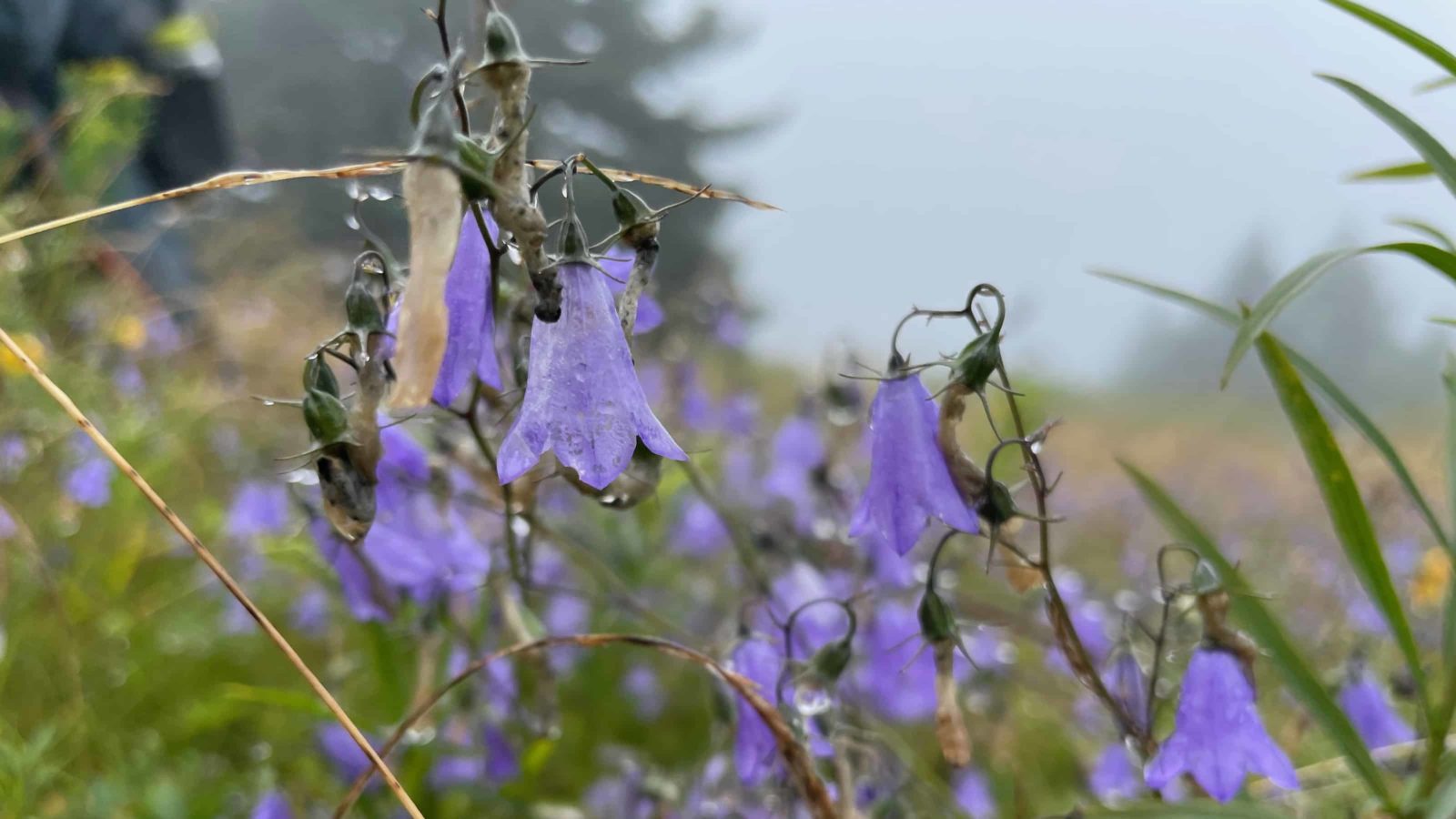You can see 90 miles from here on a clear day. We can see about 30 feet across the meadow. The lighthouse might be useful on a day like this, if it were lit. It feels like standing on the coast, up here on the summit of Mount Greylock at the end of a storm. We’re islanded in cloud.
We’re almost alone, a rare feeling up here on a summer day. Friends of mine are here visiting, and they prompt me to drive up the old tarmac road. At other times all three of us are hikers and climbers, but today we roll up gently. Oak and maple give way to birch and beech and mountain ash, slighter and more sinewy, and then to red spruce and balsam.
Robert Macfarlane talks about places where we feel a transition. You feel yourself moving from one place to another, somehow definably different, even when it is close by. Coming up to the summit feels like that for me, except that he is talking about moving from a known to an unknown, and the summit is as familiar as my backyard. And it feels like heading north 200 miles.
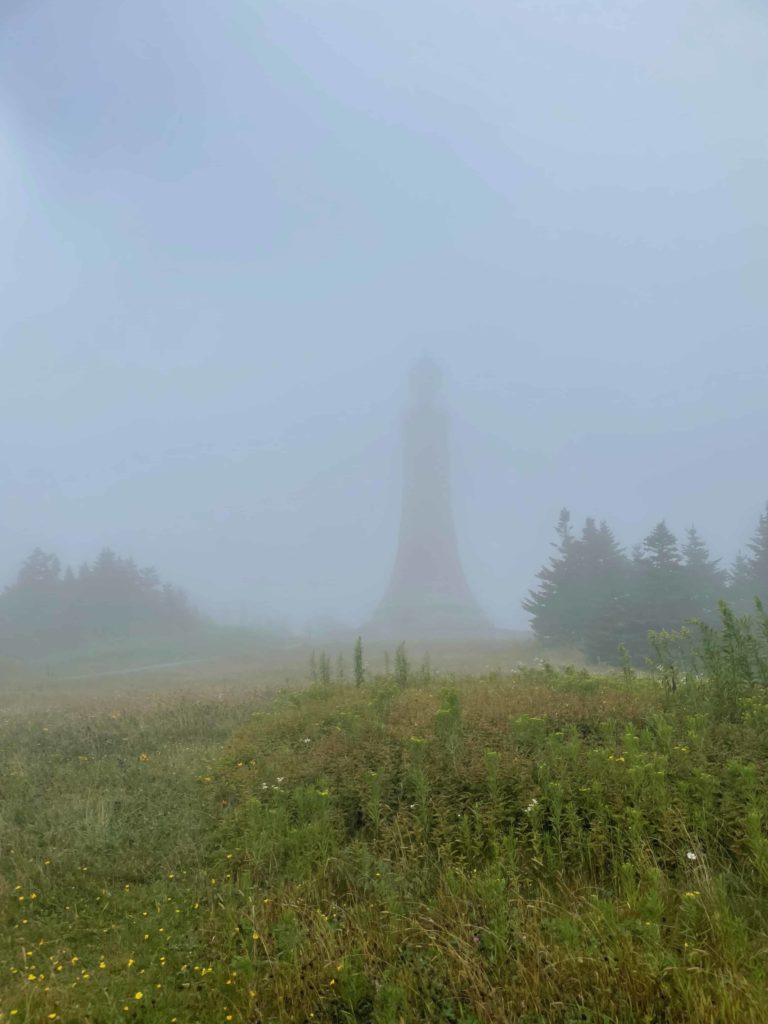
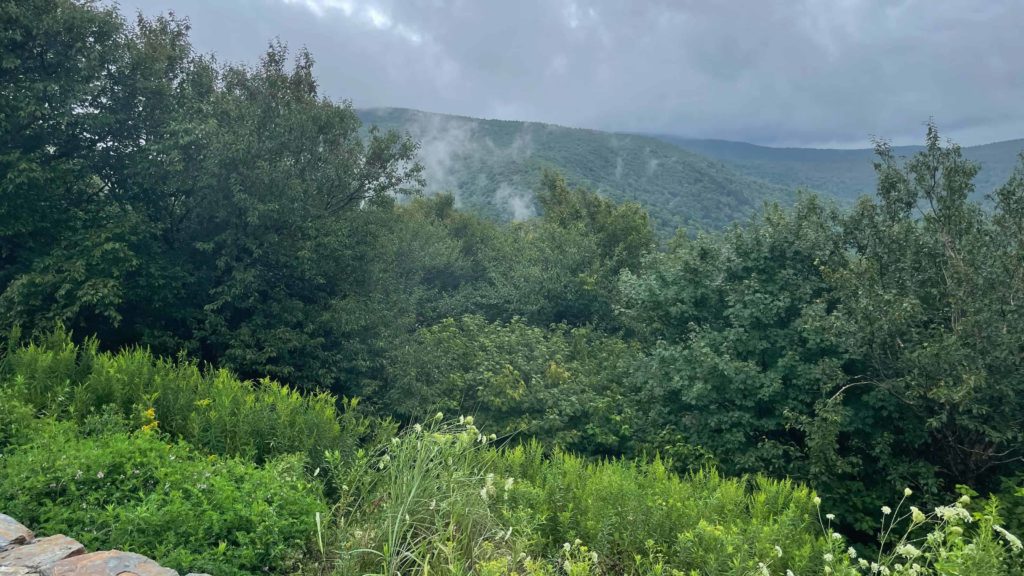
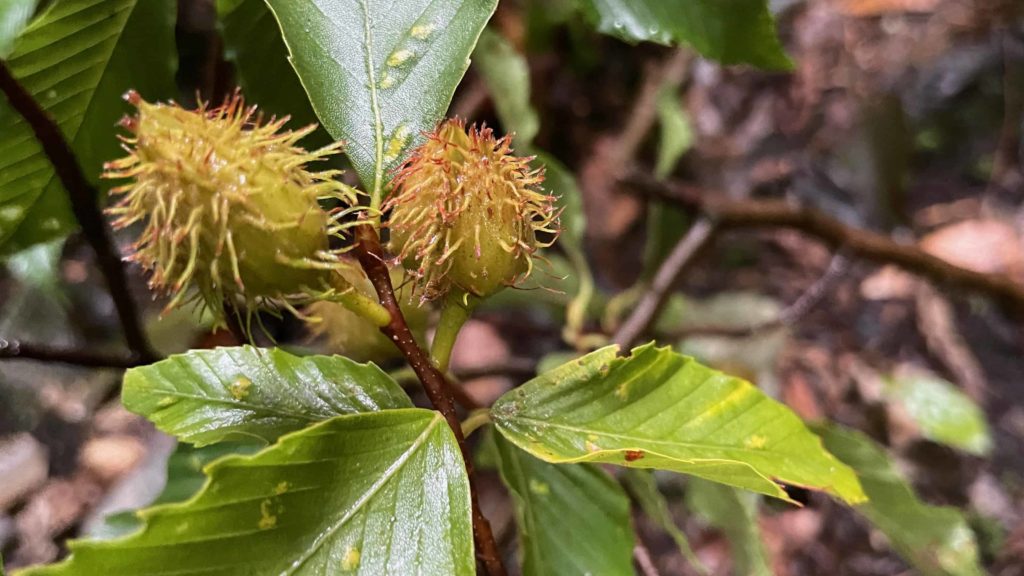
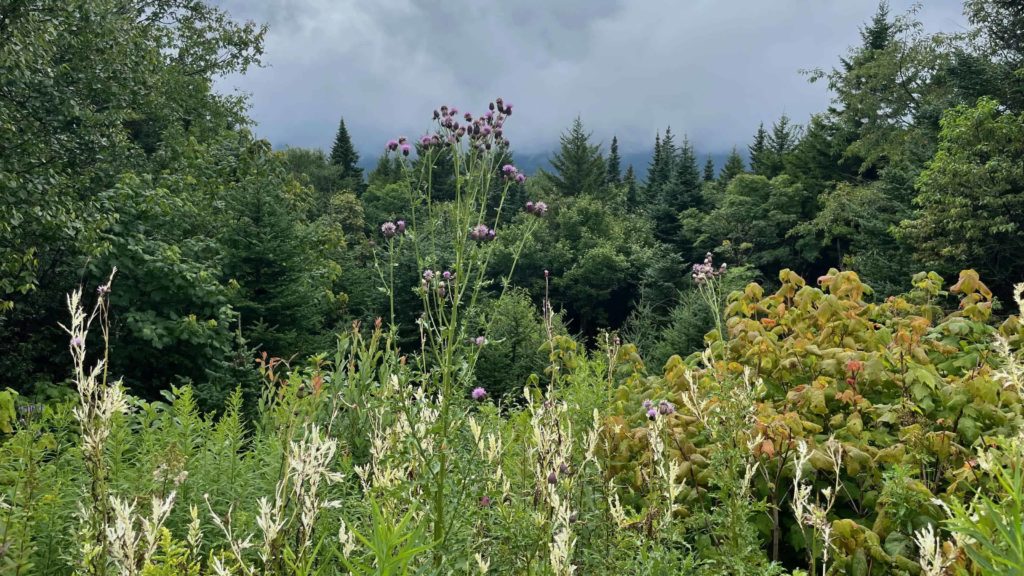

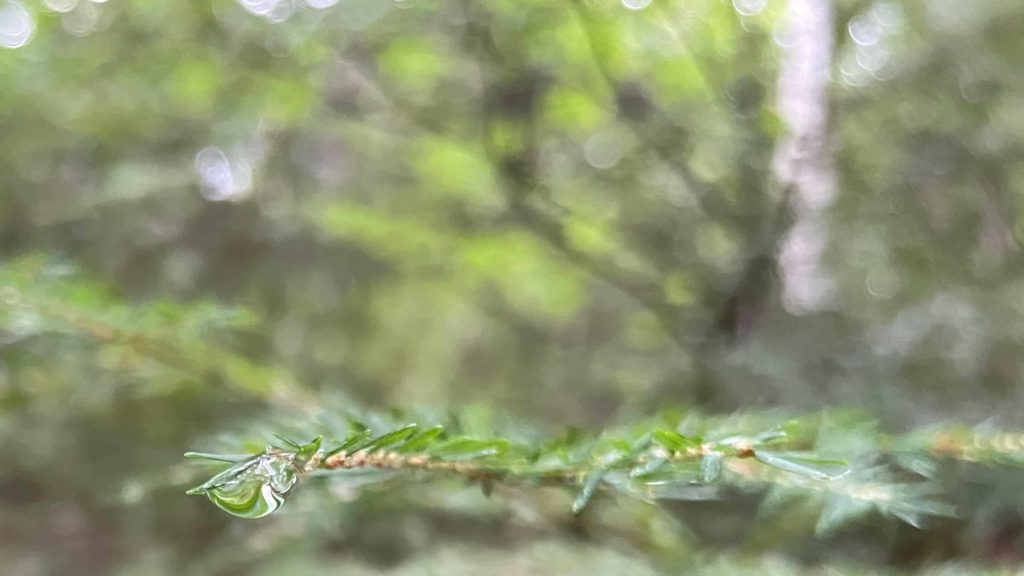
If there’s a word for the topography of the tree canopy, up here it changes. Up here we’re walking on an island of boreal forest. This is the highest point in the state, at 3,149 feet, and so it’s one of the coolest. We have spruce and fir woods up here that you won’t see again until Canada. In the high meadow, the three of us walk softly around dozens of bluebells in bloom.
My friends have lived in many places, from West Virginia to Sweden to Thailand, and they tell me the Appalachians have more biodiversity than almost anywhere else on the planet. They say it’s because the mountains run north to south. When the glaciers came south, plants and animals moved south too, keeping far enough from the ice to survive. In Europe and Asia, the mountains run east-west, and the ice covered them.
How have I never known this before? Think about this for a minute. These old mountains have more life in them than almost anywhere else — trees and flowers, spiders and tree frogs, mosses and moths and cougars and moose. We’re talking about the whole range, from Georgia to Canada, but think about how many variations we have in the Berkshires alone, bogs and fens, highlands and river valleys. We have a good share of it.
Now I want an alternative word for Macfarlane — a word for a transition where a familiar place becomes new to you.

Rain mists the Hopper, a high valley, from an overlook near the summit of Mount Greylock.
Just outside the summit park, at a pulloff, we cross the road to look at flakes of rock shining with wet below a sheer wall. The core of the mountain is schist, clay that has gone through the metamorphic fire. It sounds like a giant earthenware bowl.
It turns out people have seen it that way for a long time. Local historian and linguist Lion Miles says in Mohican the mountain is called Hoosac or Hoosic, like the river in the valley below, and he traces the roots of the word to mean a place like a bowl. He sees the mountain looking like a skillet turned over. It is also a mountain shaped like a cup around the high valley of the Hopper, and I wonder if the vessel might be sitting right way up.
A couple of miles farther on, I can imagine it. We stop at a trail head and scramble down a slender path. It has the feel of damp earth over roots, sometimes swinging around birch saplings and young hemlock, sometimes climbing down stone steps, natural shapes but clearly set there by hand.
At the foot, the path comes out midway down a waterfall. I had thought the falls in our mountains as old and gentle as the mountains themselves, worn smooth by time — but this one feels massive. It rises hundreds of feet above me and falls farther on below, almost vertical, cresting in foam and dropping, and then dropping again. And the sheer weight of the water feels vaster than human scale, like a storm.
It gives me a sense of the size of the mountain I’ve never had before. I’ve walked up from the valley to the summit, and measuring the whole height of it by foot gives me a feel for it in one way. But I’ve never felt the scope of it like this — the weight of rock, the living communities of trees, the upper slopes where moose walk and browse on the bark of cedar and spruce trees.

Fir trees loom in the mist at the summit of Mount Greylock.

